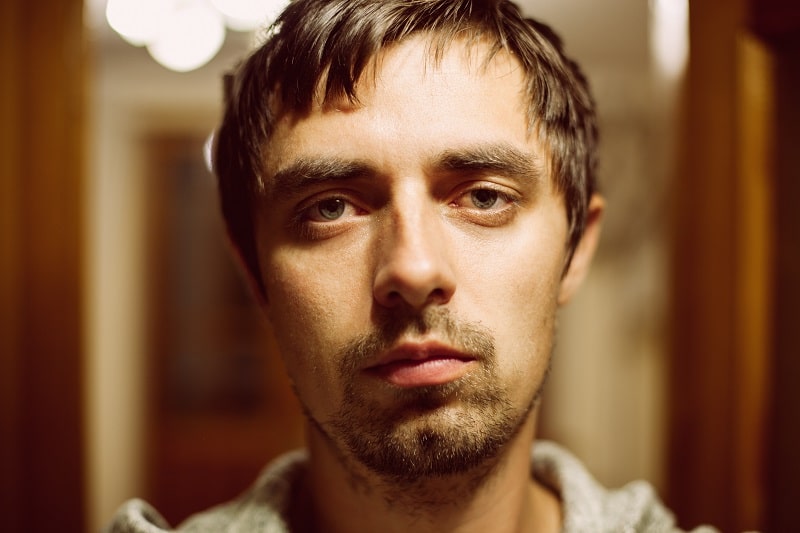Reader’s Clinical Conundrum
“Dr. Jack, I’m a seasoned psychiatrist. I’ve been treating really difficult patients, many with dual diagnoses, for close to 20 years. I wanted to get your thoughts on one topic. Sometimes I get a patient that sooner or later I just know they are not going to make it, to be blunt that they will prematurely die by overdose, getting murdered, dying accidentally from some reckless activity, or through suicide. Sometimes I feel like I can see it in their eyes, and it unnerves me because I don’t want to think I’ve got them pegged, like they’re doomed. This came to mind recently when one such patient with depression, alcohol and meth addiction died by suicide. I just wanted your thoughts on this. Thanks.” – Anonymous
Dr. Jack’s Response
Dear Anonymous, thanks for your message. This is an important and often ignored aspect of our experiences as clinicians deploying our imperfect skills while working with imperfect patients in the context of great uncertainty and lack of control over most of the variables impacting our patients’ lives. Here are some thoughts. Some may not apply to you or are already obvious to you. I’m responding in a more general way given my lack of details regarding the nature of your experiences.
Clinician Dealing with Patient Suicide
No matter how long a clinician has been practicing and how difficult the patient population, a patient suicide can be expected to hit the clinician hard. The most common clinician responses are 1) guilt over what one did and did not do, 2) questioning one’s clinical competence, and 3) some worry about a malpractice suit. Not only are these responses common but they are normative and even healthy. Any clinician who takes a patient suicide in stride 1) doesn’t care enough (unlikely), 2) is suppressing or repressing thoughts and feelings regarding the suicide, or 3) doesn’t have enough self-insight to appropriately question their possible contribution to the outcome. No one is perfect, after all.
First, dealing with guilt requires open-mindedly reviewing and pondering the series of events that led to the suicide. This will likely lead to a realization that one was not responsible for most aspects of the events that led to the suicide, despite the natural human tendency to feel responsible for outcomes that one’s actions did not contribute to. An important example of this tendency is the feeling of responsibility that many victims of assault or abuse feel for being victimized. There might be some increase in evolutionary fitness among social creatures such as ourselves to have this inclination to take responsibility for events for which we shouldn’t, but this is mere speculation on my part.
Second, dealing with guilt surrounding patient suicide should also include an attempt to learn from what occurred and incorporate changes into one’s clinical approach that become evident from such reflection. When managing patients, we are necessarily limited by our perceptions, knowledge, and skill and we must be able to accept this state of affairs. But, given these limitations, every new clinical experience we encounter should be viewed as an opportunity to expand our perceptual, knowledge, and skill base. There is no endpoint to what we can and need to learn.
Third, the clinician may benefit from an explicit (if private) 1) reckoning with one’s relative helplessness in the face of human suffering and limited ability to effect change, 2) need for self-forgiveness for any shortcomings that in hindsight one identifies, and 3) recommitting to continue in the clinical role despite one’s relative helplessness and the world’s brokenness. Giving up is an alternative, of course, but what would that solve? It would likely lead to even more bad outcomes. Of course, every clinician has limits. Sometimes, one is truly ready to move on. No one can carry the world’s burden, but just as much as they are able.
And, fourth, regarding worry about being named in a malpractice suit due to patient suicide: nothing I said above will or should weaken a clinician’s legal defense. This is a large topic on its own and I’ll defer its discussion to a future post.
Deep Due Diligence
Turning now to a clinical sense of the inevitability of some patients ‘falling’ into premature death. I know what the writer means by this, and I’ve felt it too. It’s unnerving and I’m glad the writer raised this issue. First, I think that a clinician should trust their gut, that their sense of the inevitability of a bad outcome should be explicitly self-acknowledged and its sources sought. There is a reason – probably several – that triggers this sense in a clinician.
When one looks at the lives of some patients, there is so much dysfunction present on so many levels that it can lead to a sense of overwhelm in the clinician. In these cases, it’s easy to prescribe an intervention, often a medication like an SSRI, that one knows deep down is unlikely to lead to a turn-around and yet is easy to prescribe and provides a way to move away from the sense of one’s clinical helplessness. The harder approach – harder because it is more time-consuming, complex, and still likely to fail – is to linger in that sense of overwhelm and plot a more comprehensive strategy. SSRI’s in such a case are rarely a bad approach and rarely enough. This plotting of strategy can only come from a deep knowledge of the patient’s various functions and interactions. For example, where would a clinician start with a patient with the following features: chronic depression, alcohol and meth addictions, recurrent treatment-failures and relapses, deep shame and guilt, lack of support, limited financial resources, lack of access to any potential job, lack of non-drug using meaning and purpose, limited problem-solving skills, maladaptive coping strategies, ingrained maladaptive habits, maladaptive cognitive biases, social network limited to other drug-using associates, and poor health. In such a case, it’s fair to ask: where is the kernel of health and strength that can be leveraged to undo or counteract the massive number of maladaptive features the patient displays, all of which are involved in vicious feedback loops, gathering strength with each passing setback? Let’s not be under any illusion: this is a wickedly hard series of problems to resolve. It took years to get to this point and, in the best circumstances, will likely take years to resolve.
So, when you consider where to start with a patient to initiate a process of change, how do you decide? My answer is: 1) Given the number of inter-related problems the patient shows, start by addressing more than one factor, targeting one or two in each of the biopsychosocial areas, but also prioritizing and not initiating everything at once. 2) Asking the patient’s advice on what they believe they need most. This isn’t fool-proof and plenty of patients have poor self-insight. On the other hand, I’ve been astounded by how insightful some patients are. They will tell you to the second decimal point what they need to recover. 3) Consider interventions that will not only address problems but that will add positives. Happiness and depression aren’t opposites or, at least, not fully so. Adding a reason to live, such as through developing relationships with non-drug-using associates, and adding activities that are fun, meaningful, and absorbing, can be the most important interventions for some people, more so than directly focusing on problems. I like to consider how to both decrease the bad AND add the good.
I think we all reach times, often in response to a treatment failure, sometimes in response to a patient suicide, maybe with a patient we were particularly invested in and had high hopes for, that we encounter a clinical abyss, a realization of how puny are the effects of our efforts, uncertain the outcome, and great our burden. It’s fair to say, we are disappointed every day. It’s easy to want to give up with some patients. But counterbalancing this is hope, the unexpectedly happy outcome, and the deep regard a patient can have for you and your efforts. “I can’t go on. I’ll go on,” wrote Samuel Beckett.
Until next time,
Dr. Jack
LanguageBrief
Today’s Quotes
“Kill what you can’t save
what you can’t eat throw out
what you can’t throw out buryWhat you can’t bury give away
what you can’t give away you must carry with you,
it is always heavier than you thought.”
Margaret Atwood“I know all that will be coming but be it what it will, I’ll go to it laughing.”
Herman Melville“In any weather, at any hour of the day or night, I have been anxious to improve the nick of time, and notch it on my stick too; to stand on the meeting of two eternities, the past and future, which is precisely the present moment; to toe that line.”
Henry David Thoreau, Walden







Leave A Comment